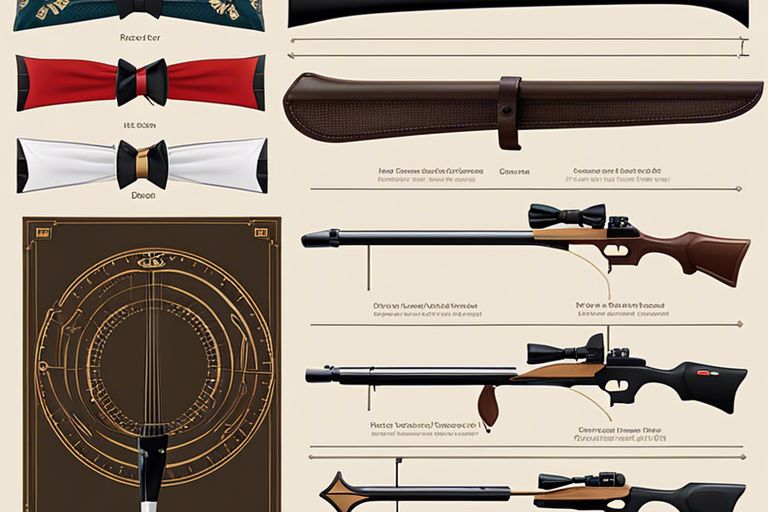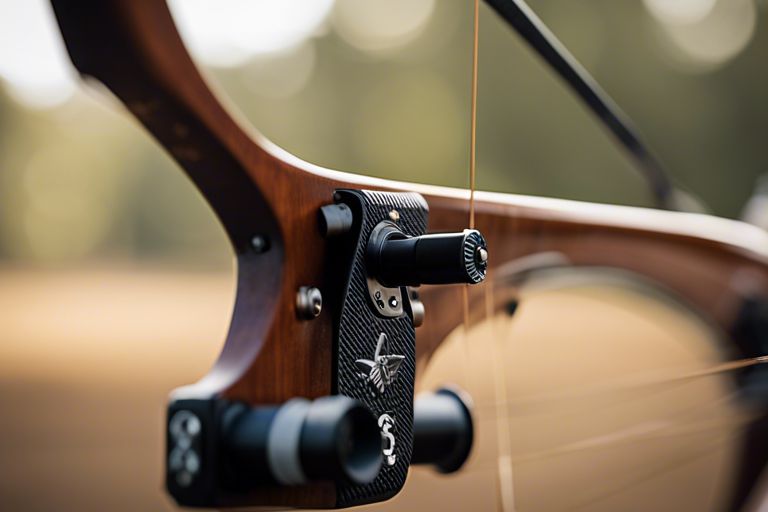There’s a vast world of bows out there, each unique in design and function. Whether you’re an archery enthusiast, a beginner looking to explore into the world of archery, or simply curious about the different types of bows available, this guide is your ultimate resource. From classic longbows to modern compound bows and traditional recurve bows, we’ll explore the characteristics, uses, and advantages of each bow type. Get ready to discover the right bow for your archery needs!

Contents
- Types of Bows
- Recurve Bows
- Compound Bows
- Longbows
- Crossbows
- Other Variations
- Factors to Consider When Choosing a Bow
- Bow Purpose and Application
- User’s Skill Level
- Physical Strength and Fitness
- Step-by-Step Guide for Beginners
- Selecting Your First Bow
- Basic Archery Techniques
- Safety Tips and Maintenance
- Pros and Cons of Each Bow Type
- Summary of Advantages
- Summary of Disadvantages
- To wrap up
Types of Bows
The different types of bows available cater to various shooting styles, experience levels, and preferences. Understanding the distinctions between each type can help you choose the right bow for your needs. Here is a breakdown of the common types of bows:
| Recurve Bows | Compound Bows |
| Longbows | Crossbows |
| Other Variations |
Recurve Bows
Now, Recurve bows have limbs that curve away from the archer when the bow is unstrung. They are known for their elegant design and are popular in Olympic archery competitions.
Compound Bows
There’s a wide variety of Compound bows which are modern bows that use a system of cams and cables to provide a mechanical advantage. This results in a bow that is more energy-efficient and easier to hold at full draw.
Any
Longbows
Longbows are simple in design, consisting of a straight piece of wood that is the same height as the archer. They date back to medieval times and offer a traditional shooting experience.
Recurve
Crossbows
An increasingly popular choice for hunting and target shooting, crossbows have shorter bows mounted horizontally on a stock, allowing for easier aiming and shooting with high draw weights.
Significance
Other Variations
Bows come in a variety of other forms, including horse bows, traditional bows, and takedown bows. These alternative styles cater to specific preferences and historical enthusiasts alike.
For instance, some ancient civilizations used composite bows made from multiple materials like wood, sinew, and horn. These intricately crafted bows were known for their power and accuracy in battle. Thou.
Factors to Consider When Choosing a Bow
Not all bows are created equal, and selecting the right one for your needs requires careful consideration of several key factors. Here are some important aspects to keep in mind:
- Bow Purpose and Application: Choosing the right bow starts with understanding how you plan to use it. Are you looking to hunt, compete in archery tournaments, or simply practice for recreational purposes?
- User’s Skill Level: Beginners, intermediate, and advanced archers have different needs when it comes to selecting a bow. Your proficiency level will impact the type of bow that is best suited for you.
- Physical Strength and Fitness: Your physical capabilities play a crucial role in choosing the right bow. Consider your strength and endurance levels before selecting a bow that matches your physical abilities.
Bow Purpose and Application
Choosing the right bow for your specific purpose is crucial. Whether you are looking to hunt for game, compete in tournaments, or practice for recreational purposes, the bow you choose should align with your goals and intended application.
User’s Skill Level
Users at different skill levels have unique requirements when it comes to selecting a bow. Beginners may benefit from user-friendly and forgiving bows that help build confidence and accuracy, while advanced archers may require precision and performance-focused bows to push their skills to the next level.
Physical Strength and Fitness
To ensure optimal performance and comfort, it is necessary to consider your physical strength and fitness level when choosing a bow. A bow that requires more strength to draw may lead to fatigue and inconsistency if it does not match your physical abilities.
Step-by-Step Guide for Beginners
To What are the different types of archery bows? Exploring the world of archery can be an exciting journey for beginners. Here is a step-by-step guide to help you kickstart your archery experience.
| Selecting Your First Bow | Basic Archery Techniques |
Selecting Your First Bow
For beginners, selecting the right bow is crucial. Start with a lighter draw weight to build your strength and improve your form. Consider your dominant eye when choosing between a right-handed or left-handed bow. Seek guidance from a professional to ensure you choose the best option for your comfort and skill level.
Basic Archery Techniques
Beginners in archery should focus on mastering the basic techniques before moving on to more advanced skills. Start with learning how to nock an arrow, grip the bow correctly, and position your body. Practice consistency in your stance and aim to develop muscle memory for better accuracy and performance.
Safety Tips and Maintenance
An important aspect of archery for beginners is understanding safety guidelines and maintaining your equipment properly. Here are some key tips to keep in mind:
- Always inspect your bow and arrows for any damage before use.
- Use an armguard to protect your forearm from string recoil.
- Wear a finger tab or glove to prevent blisters and injuries.
Recognizing the importance of safety measures and regular maintenance can contribute to a safe and enjoyable archery experience for beginners.

Pros and Cons of Each Bow Type
Compound Bow
| Pros | Cons |
| – High accuracy | – Complex design |
| – High speed | – Maintenance required |
| – Let-off at full draw | – Expensive |
Recurve Bow
| Pros | Cons |
| – Simple design | – Lower power compared to compound bow |
| – Easy takedown for transport | – More effort for accuracy |
| – Less maintenance | – No let-off |
Summary of Advantages
The advantages of each bow type cater to different needs and preferences of archers. Whether you prioritize speed and accuracy, or simplicity and ease of maintenance, there is a bow type that suits your style.
Summary of Disadvantages
Little drawbacks exist for each type of bow, highlighting the drawbacks can help in making an informed decision. It is important to consider these factors before making a purchase to ensure you choose the right bow for your needs.
For instance, while compound bows offer high accuracy and speed, they are also more complex in design and require regular maintenance. On the other hand, recurve bows, known for their simplicity and easy transport, may require more effort to achieve the same level of accuracy as a compound bow.
To wrap up
Ultimately, understanding the different types of bows available can help you make an informed decision when choosing the right one for your needs. Whether you are a beginner or a seasoned archer, knowing the differences between recurve, compound, longbow, and crossbows can enhance your archery experience. Consider factors such as your skill level, intended use, and personal preferences before making your selection. Be mindful of, practice and proper technique are key to mastering any type of bow. So, take your time, explore your options, and enjoy the art of archery with the bow that suits you best.

Leave a Reply